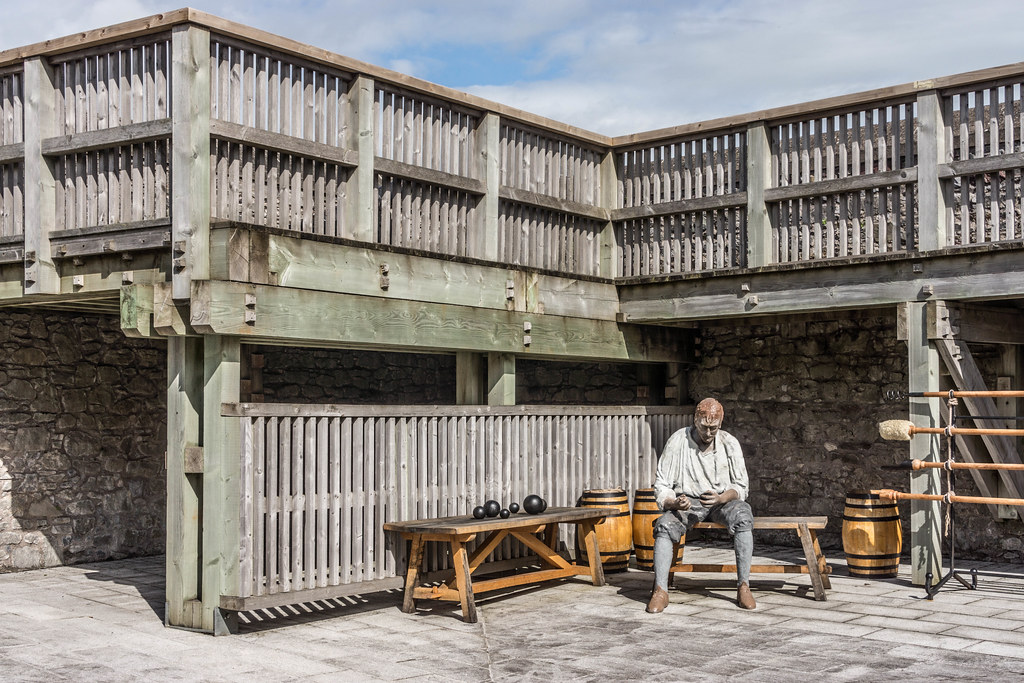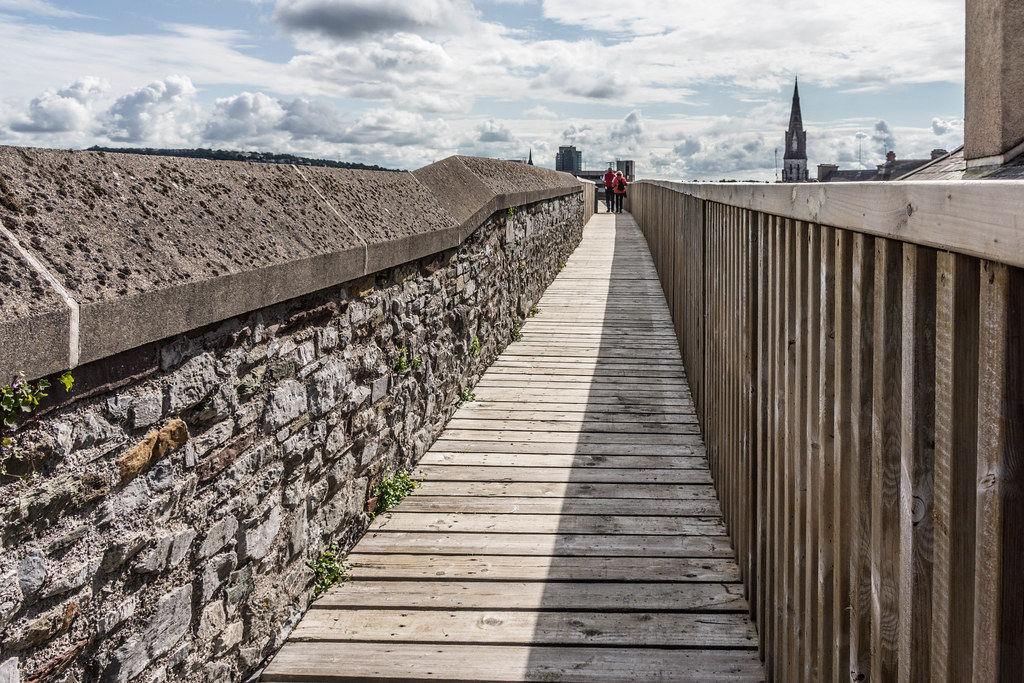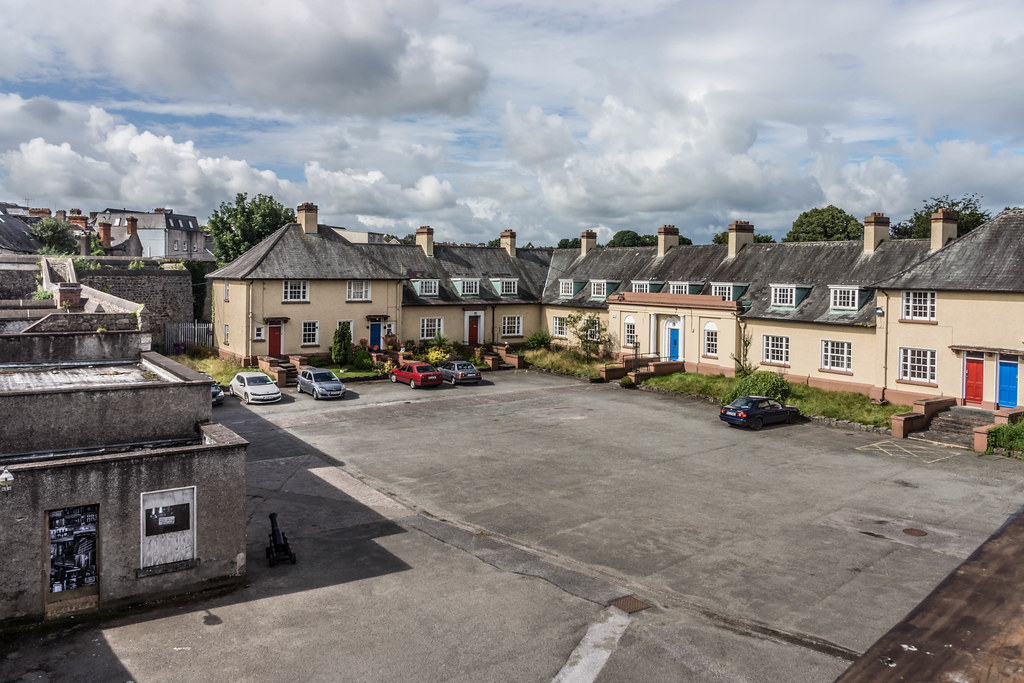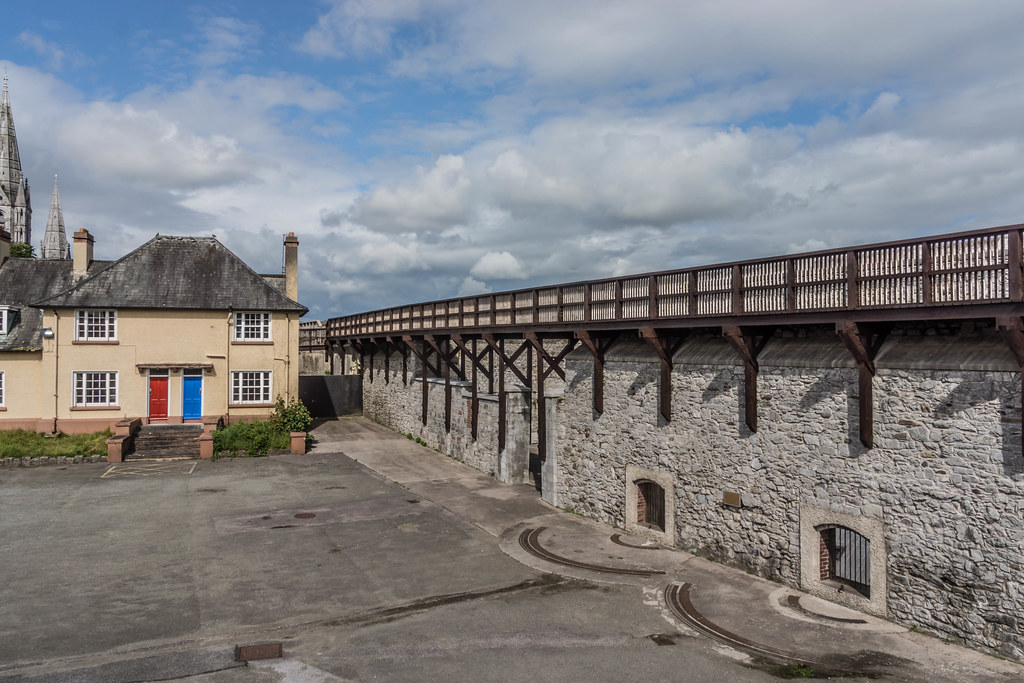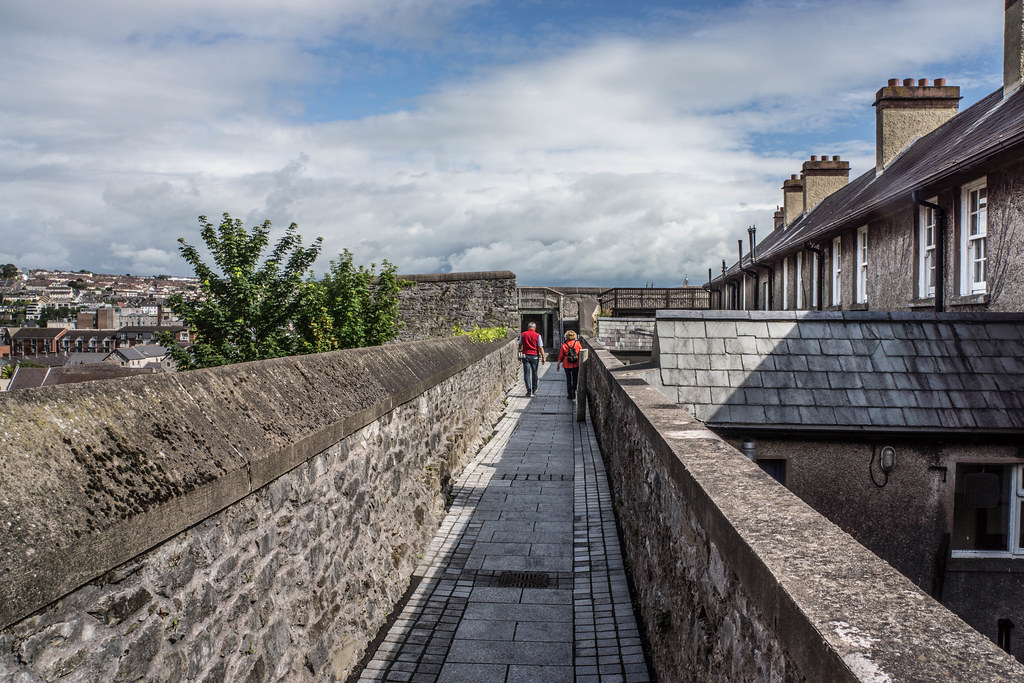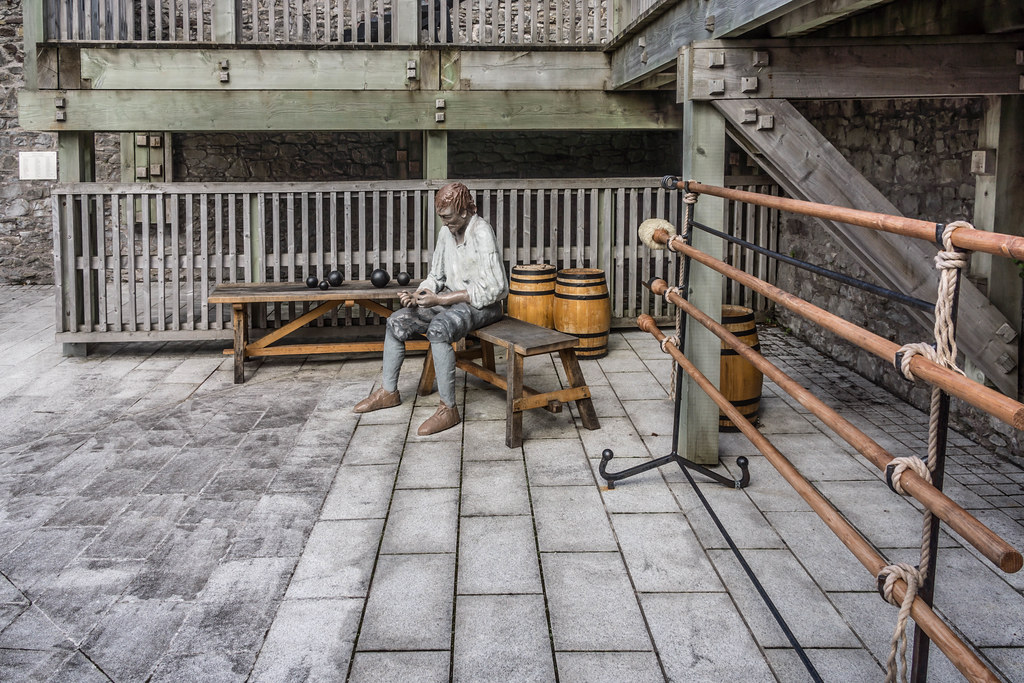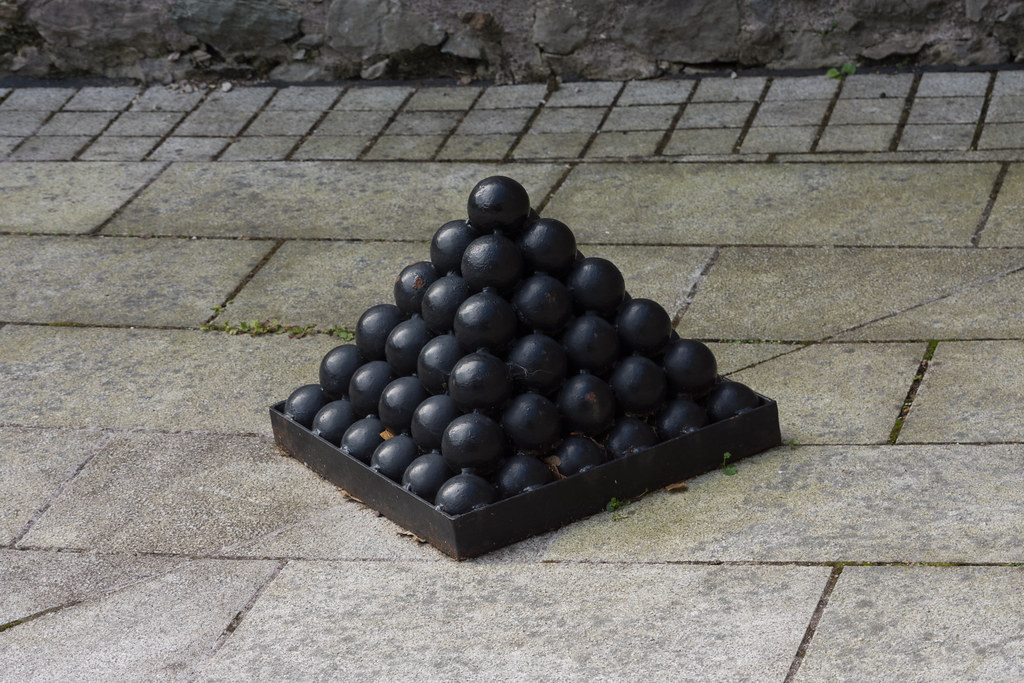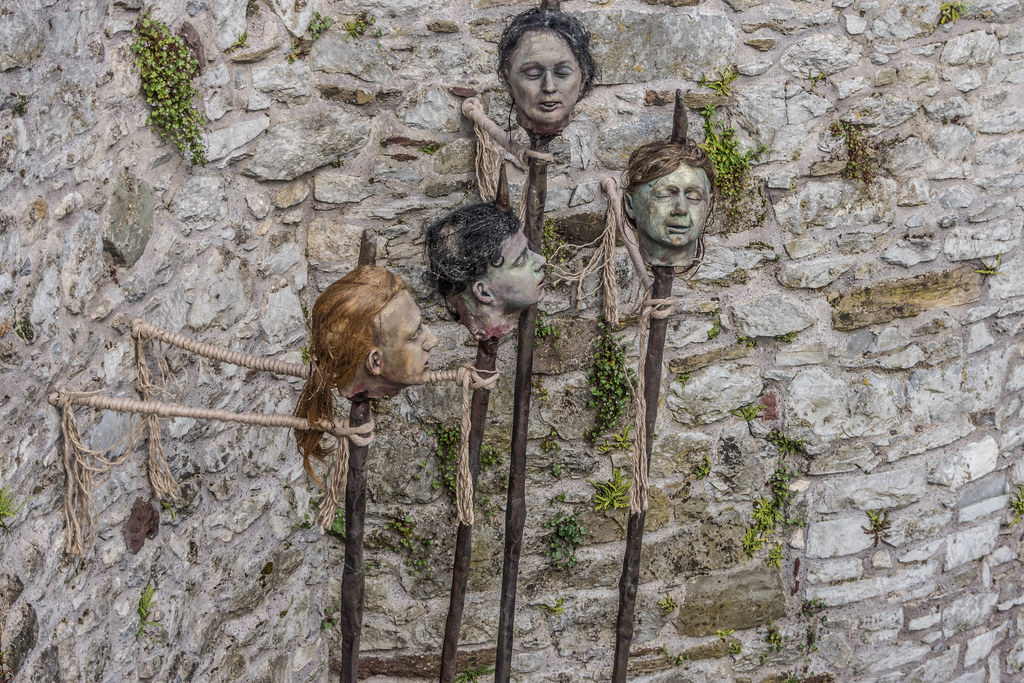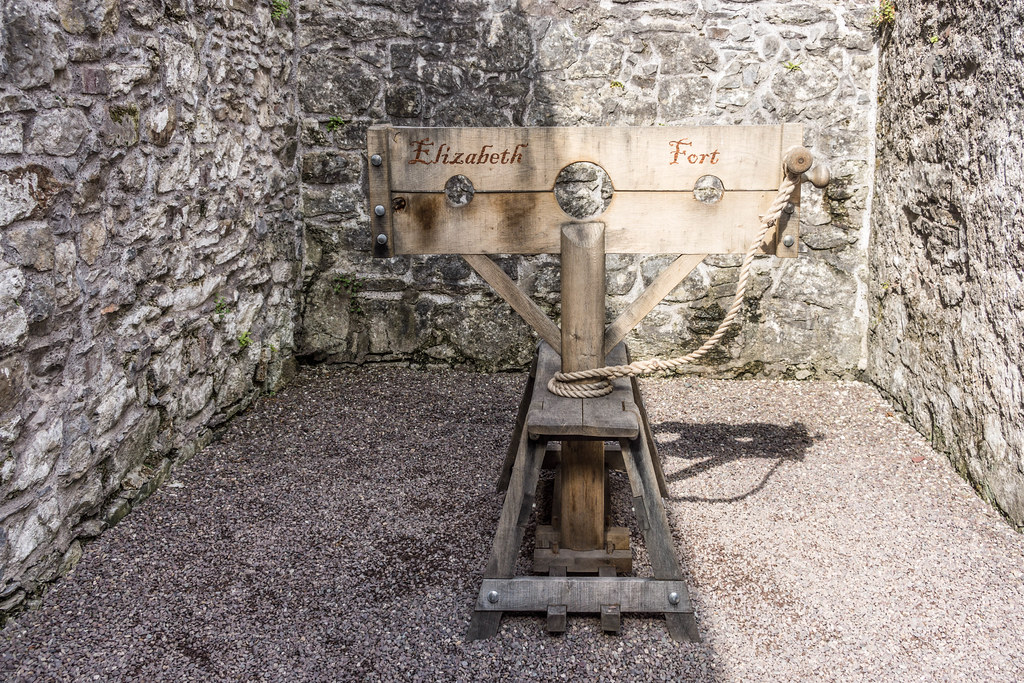ELIZABETH STAR-SHAPED FORT
The view of the city of Cork from the walls of this “star-shaped fort” is excellent but the city is less attractive than I had expected as there are many derelict sites to be seen.
William Murphy
Up until this visit I was not aware of the Elizabeth Fort and I came across it be accident. On entering the fort I was greeted by two very enthusiastic guides and I was delighted to discover that there was no entry fee and not even a request for a donation.
To be honest there is not a lot to see in the actual fort but if you are interested in history it is a place that you must visit if you ever get the opportunity to spend time in Cork.
If you have children they will be especially delighted by the impaled heads.
To be honest there is not a lot to see in the actual fort but if you are interested in history it is a place that you must visit if you ever get the opportunity to spend time in Cork.
If you have children they will be especially delighted by the impaled heads.
SORRY FOR THE DELAY
Elizabeth Fort is situated on the south side of the city and is said to be one of the finest examples of a 17th century star-shaped fort. The fort itself has gone through a number of phases & rebuilds. Originally built in 1601 during the reign of Elizabeth I, it was replaced in 1624 by a stronger fort which had the same basic outline as that which survives today.
It is reputed that improvements were also made by Cromwell 1649 when he took control of the city. It was used again in 1690 by Williamite forces to shell the city and a cannonball fired from the Fort at the old tower of St. Fin barre’s was found during the 19th century rebuilding of the Cathedral.
In 1719, Elizabeth Fort became a British military barracks and housed approximately seven hundred men. In 1806, a ‘New Barrack’s’ was built on the north side of the city (now called Collin’s Barracks), and Elizabeth fort was converted to a Female Convict Prison. It subsequently became home to various bodies such as a station for the Cork City Artillery Militia.
During the Irish War of Independence (1920-21), it was occupied by the Royal Irish Constabulary and duly handed over to the Provisional Irish government at the end of the war. It is now a Garda Station (Irish police force) and to this day remains one of Cork’s most historic gems. Never been excavated, Elizabeth Fort has a wealth of stories waiting to be discovered and to be told.
The fort itself is partially open to the public and it is well worth the a visit for the views over the city.
It is reputed that improvements were also made by Cromwell 1649 when he took control of the city. It was used again in 1690 by Williamite forces to shell the city and a cannonball fired from the Fort at the old tower of St. Fin barre’s was found during the 19th century rebuilding of the Cathedral.
In 1719, Elizabeth Fort became a British military barracks and housed approximately seven hundred men. In 1806, a ‘New Barrack’s’ was built on the north side of the city (now called Collin’s Barracks), and Elizabeth fort was converted to a Female Convict Prison. It subsequently became home to various bodies such as a station for the Cork City Artillery Militia.
During the Irish War of Independence (1920-21), it was occupied by the Royal Irish Constabulary and duly handed over to the Provisional Irish government at the end of the war. It is now a Garda Station (Irish police force) and to this day remains one of Cork’s most historic gems. Never been excavated, Elizabeth Fort has a wealth of stories waiting to be discovered and to be told.
The fort itself is partially open to the public and it is well worth the a visit for the views over the city.
THE PHOTO DIARY IS NOT LIMITED TO CORK AS I ONLY VISIT THE CITY ONCE EVERY YEAR AND 2020 MAY BE AN EXCEPTION. I AM BASED IN DUBLIN BUT DURING THE SUMMER MONTHS I VISIT BELFAST, LIMERICK, GALWAY, KILKENNY AND WATERFORD AND USUALLY DEVOTE A WEEK TO PHOTOGRAPHING EACH OF THE CITIES IN QUESTION
MUSE PROTECTIVE CASE FOR iPHONE 12 PRO MAX AN AMAZON AFFILIATE LINK
Mous - Protective Case for iPhone 12/12 Pro - Limitless 3.0 - Black Leather - No Screen Protector
| Binding | Wireless Phone Accessory |
|---|---|
| Brand | MOUS |
| Color | Black Leather |
| Manufacturer | Mous |
| Product Group | Wireless |
You will find links to buy products from Amazon, Google and other partners. If you click on these links, you’ll find that the URL includes a small extra piece of text which identifies that the click came from my websites. This text is an affiliate code, and it means that I get a small percentage of the money you spend if you choose to buy that product, or, in some cases, other products from the site soon after. These affiliate links help pay the costs of producing my websites and ensure that the content is free to you.
